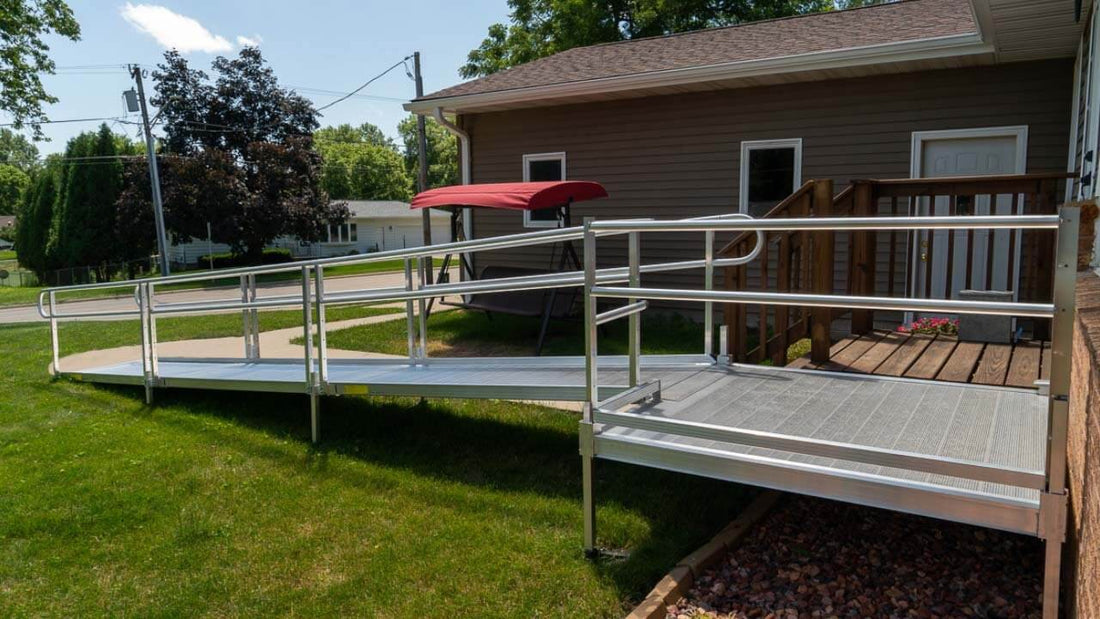Finding the right funding solution for a wheelchair ramp can feel overwhelming, but there are numerous options available to help cover the cost. Below, we’ve broken down potential funding sources, including insurance coverage, government assistance, nonprofit programs, and more.
Insurance Options
Medicare
Medicare Part B covers durable medical equipment (DME) such as wheelchairs but does not reimburse for wheelchair ramps. However, Medicare Advantage plans (offered by private insurers) may provide coverage for ramps, depending on your specific plan and location. Consult a private insurance agent to review your policy and explore coverage options.
Medicaid
Medicaid, a federal program for low-income seniors and individuals with disabilities, offers two potential pathways for coverage:
-
Regular Medicaid: In some cases, ramps may be covered if deemed medically necessary, though qualifying can be challenging.
-
HCBS Waivers: Many states offer Home and Community-Based Services (HCBS) Waivers that cover home modifications like ramps. Check your state’s Medicaid Waiver programs for specific details.
Non-Profit Assistance
For non-veterans, several national nonprofits provide financial aid for home accessibility modifications:
-
AccessABILITY Experience: Provides grants and volunteer labor to assist low-income families.
-
Rebuilding Together: Offers help with home modifications, including ramps, handrails, and other safety improvements.
-
National Directory of Home Modification Resources: A state-by-state directory for financial aid and resources for wheelchair ramps.
-
Centers for Independent Living: Local organizations that offer funding and guidance for accessibility solutions.
Assistance for Veterans
Veterans have access to a range of programs designed to improve home accessibility:
-
Veteran-Directed Home and Community Based Services (VD-HCBS): Covers home accessibility modifications, including ramps, for veterans requiring nursing-home-level care but who prefer to live at home.
-
TRICARE for Life: Supplements Medicare Part B and covers co-pays for ramps.
-
VA Specially Adapted Housing (SAH) Grant: Provides funding for barrier-free homes for veterans with service-connected disabilities.
-
Home Improvements and Structural Alterations (HISA) Grant: Offers financial aid for necessary home modifications, regardless of whether the disability is service-connected.
Government Loans and Grants
Home Improvement Loans
Homeowners may qualify for government-backed loans, such as the 203(K) Rehab Mortgage Insurance, to cover home accessibility modifications. Contact your state’s Department of Housing and Urban Development (HUD) to explore available loan programs.
State Assistive Technology (AT) Projects
Many states offer programs to help finance assistive technology, including ramps and other accessibility solutions. Visit your state’s Assistive Technology project for more details.
Assistance for Seniors
The Social Security Administration (SSA) provides disability and retirement benefits for seniors over the age of 80. Visit ssa.gov to learn more about eligibility and benefits that may assist with home modifications.
We’re Here to Help
At EZ-ACCESS®, we’re committed to helping you find the best funding solution for your accessibility needs. If you have questions or need guidance, don’t hesitate to contact us. Let us help you explore the funding and payment options that work best for you.

